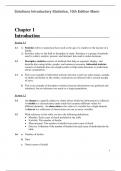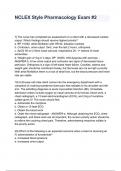Exam (elaborations)
Solutions for Introductory Statistics, 10th Edition by Prem S. Mann
- Course
- Institution
Complete Solutions Manual for Introductory Statistics, 10th Edition 10e by Prem S. Mann. Full Chapter Solutions are included - Chapter 1 to 15 Chapter 1: Introduction Chapter 2: Organizing and Graphing Data Chapter 3: Numerical Descriptive Measures Chapter 4: Probability Chapter 5: D...
[Show more]




